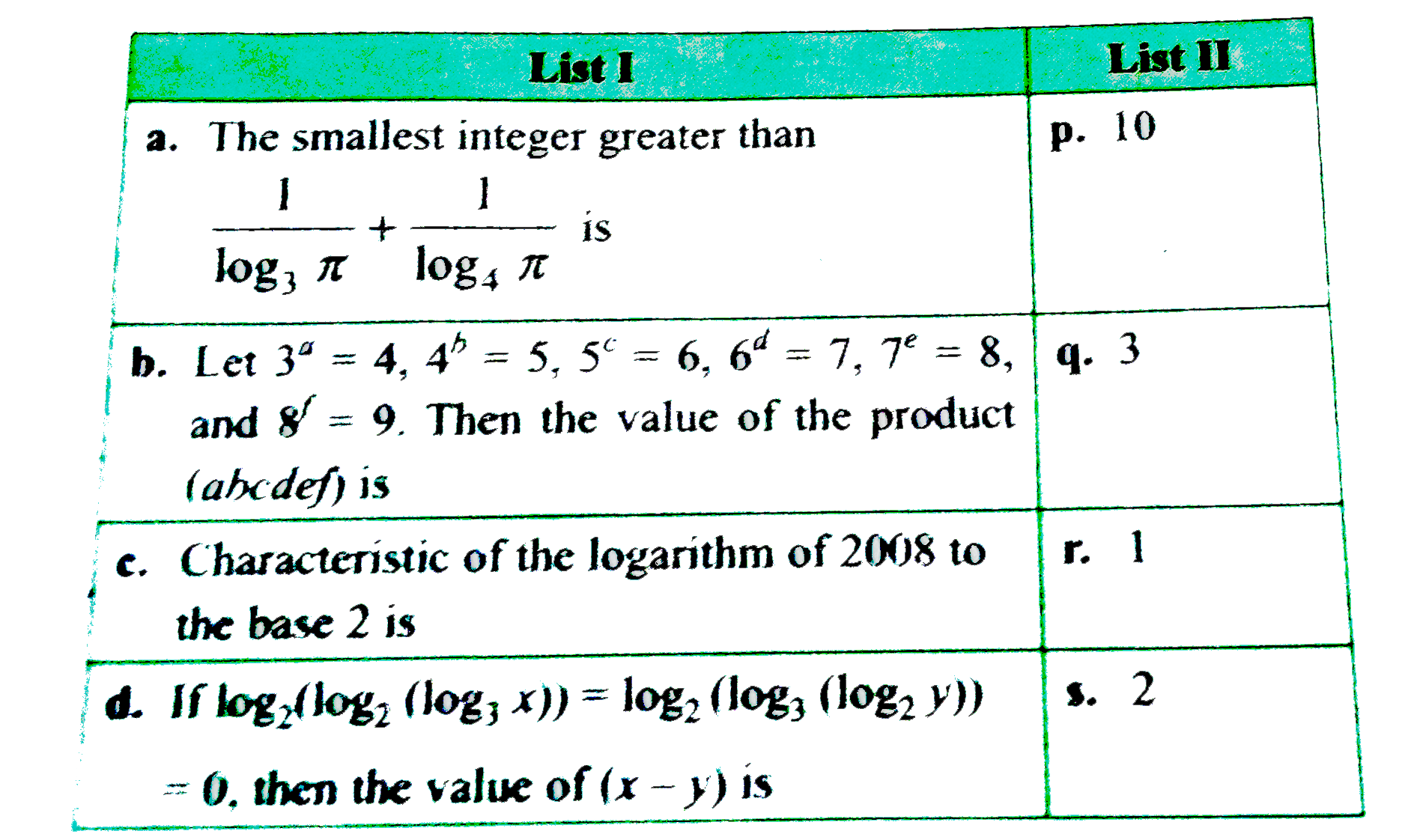If p,q∈N satisfy the equation x√x=(√x)x, then Solution in Bengali
p+q=5
|p−q|=4
pq=4
if logqp is defined, then logpq is not and vice versa
The correct Answer is:A, C, D
x√x=(√x)x,p,q∈N
⇒√xlogx=xlog√x
orlogx[√x−x2]=0
⇒logx=0or[√x−x2]=0
⇒x=1or4
Topper's Solved these Questions
- LOGARITHM AND ITS PROPERTIESBook:CENGAGE PUBLICATIONChapter:LOGARITHM AND ITS PROPERTIESExercise:Linked Comprehension Type
Explore 6 Videos
- LOGARITHM AND ITS PROPERTIESBook:CENGAGE PUBLICATIONChapter:LOGARITHM AND ITS PROPERTIESExercise:Matrix Match Type
Explore 3 Videos
- LOGARITHM AND ITS PROPERTIESBook:CENGAGE PUBLICATIONChapter:LOGARITHM AND ITS PROPERTIESExercise:Exercises (Single Correct Answer Type)
Explore 50 Videos
- LOGARITHM AND ITS APPLICATIONS Book:CENGAGE PUBLICATIONChapter:LOGARITHM AND ITS APPLICATIONS Exercise:Subjective Type
Explore 9 Videos
- MATHMETICAL REASONINGBook:CENGAGE PUBLICATIONChapter:MATHMETICAL REASONINGExercise:Archives
Explore 10 Videos
Similar Questions
Consider the system of equations
log3(log2x)+log1/3(log1/2y)=1andxy2=9.
The value of 1/y lies in the interval
View SolutionMatch the following List I to List II

View Solution(log)418 is
View SolutionFind the value of x satisfying the equations log3(log2x)+log1/3(log1/2y)=1 and xy2=9
View SolutionStatements -1 : ~(p↔~q) is equivalent to p↔q
Statement-2: ~(p↔~q) is a tautology.
View SolutionFind the real value of 'x' satisfying the equation x0.5log√x(x2−x)=3log94
View SolutionIf p,q∈N satisfy the equation x√x=(√x)x, then
View SolutionThe sum of the solutions of the equation
∣∣√x−2∣∣+√x(√x−4)+2=(x>0) is equal to
View Solutionx के सापेक्ष समाकलन कीजिए -
(1+√x)n√x.
View Solutionf(x)=√x−1√x
View SolutionIf y=sec−1(√x−1x+√x)+sin−1(x+√x√x−1), then dydx=
View Solution∫(√x+1)(x2−√x)x√x+x+√xdx
View SolutionProve that √x√x+√y+√y√x−√y+2√xyx−y=√x+√y√x−√y
View Solutionसमीकरण ∣∣√x−2∣∣+√x(√x−4)+2=0,(x>0) के हलो का योग बराबर है
View SolutionThe sum of the values of x satisfying the equation, √x(√x−4)−3∣∣√x−2∣∣+6=0(x≥0), is :
View SolutionIf p,q∈N satisfy the equation x√x=(√x)x, then
View Solution

